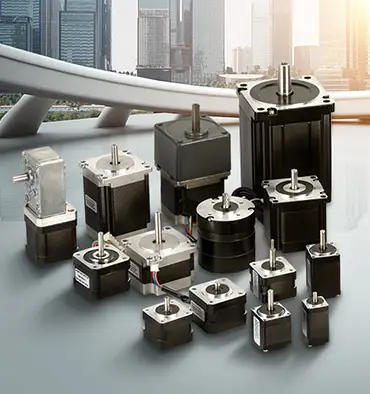How many steps in a stepper motor?
The question of how many steps are in a stepper motor is an important one, as it can have a significant impact on the performance and reliability of the motor. In this article, we will provide a detailed explanation of how many steps are in a stepper motor, and why the number of steps can vary depending on the type of stepper motor. We will also discuss the factors that can affect the number of steps in a stepper motor, and why it is important to consider these factors when selecting a stepper motor for a particular application.
A stepper motor is an electric motor that rotates in discrete steps, or increments, rather than continuously. This makes it ideal for applications where precise control of the motor's position is necessary, such as in printers, scanners, and other types of precision machinery.
Stepper motors are different from other types of motors in that they have a fixed number of steps per revolution. This means that the motor can only rotate in discrete steps, rather than continuously. For example, a stepper motor with 200 steps per revolution will rotate in 200 equal steps, each corresponding to a 1.8 degree increment of rotation.
How Many Steps are in a Stepper Motor?
Now that we have a basic understanding of how stepper motors work, we can answer the question of how many steps are in a stepper motor. The short answer is that the number of steps in a stepper motor can vary depending on the type of stepper motor, as well as other factors.
In general, stepper motors are designed to have a fixed number of steps per revolution. This number is typically specified by the manufacturer, and it depends on the design and size of the motor. For example, a stepper motor with 200 steps per revolution will rotate in 200 equal steps, each corresponding to a 1.8 degree increment of rotation.
However, the number of steps in a stepper motor can vary depending on the type of stepper motor, and on how the motor is being used. Some of the factors that can affect the number of steps in a stepper motor include:
- The type of stepper motor: Different types of stepper motors have different numbers of steps per revolution. For example, high-resolution stepper motors are designed to have a larger number of steps per revolution, which allows them to rotate in smaller increments and provide higher levels of precision.
- The operating mode of the motor: The operating mode of the motor can also affect the number of steps per revolution. For example, stepper motors that are operated in microstepping mode are able to divide each step of the motor into a larger number of microsteps, which can increase the number of steps per revolution.
- The speed of the motor: The speed of the motor can also affect the number of steps per revolution. At low speeds, stepper motors are able to rotate in a larger number of steps per revolution, but as the speed increases, the number of steps per revolution will typically decrease.
Advantages of Using Stepper Motors
Despite these challenges


Leave a Reply